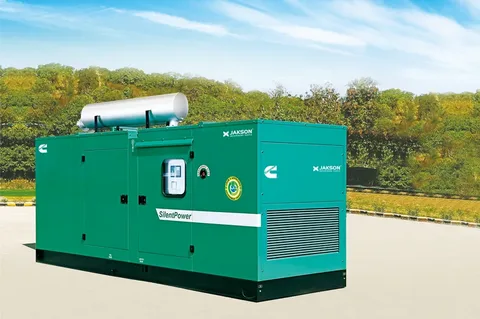Introduction
The US Gas Genset Market is witnessing robust growth driven by increasing demand for reliable, clean, and efficient power generation solutions. Gas generator sets (gensets) are emerging as a preferred choice across commercial, residential, and industrial sectors due to their low emissions, operational flexibility, and suitability for both prime and standby power applications. With the United States focusing on grid modernization, renewable integration, and resilience against power outages, the gas genset market is becoming a crucial component of the evolving national energy infrastructure.
Market Drivers
The rising frequency of power outages caused by extreme weather events and grid instability is a major driver for gas genset adoption. Businesses, hospitals, data centers, and government facilities increasingly rely on gas gensets to maintain uninterrupted operations. The shift toward cleaner fuels such as natural gas and biogas also supports market expansion, aligning with the nation’s carbon reduction goals. Moreover, industrial expansion, particularly in manufacturing, oil and gas, and construction sectors, continues to boost demand for portable and stationary gas gensets. Technological innovations enabling hybrid systems and remote monitoring are further enhancing efficiency and operational control.
Market Challenges
Despite strong growth potential, the US Gas Genset Market faces challenges such as high installation and maintenance costs, which can deter small-scale users. Access to consistent natural gas supply in remote areas remains limited, affecting large-scale deployment. Stringent emission standards and regulatory hurdles also pose barriers for traditional gas genset models, pushing manufacturers to continuously innovate cleaner technologies. Additionally, growing adoption of renewable energy sources and battery storage systems can reduce reliance on gensets in the long term, especially for small commercial users.
Market Opportunities
The market offers significant opportunities in integrating gas gensets with renewable microgrids and distributed energy systems. The increasing trend of hybrid setups, combining solar and gas gensets, ensures greater reliability and emission efficiency. The expansion of biogas infrastructure and landfill gas-to-energy projects presents another major growth avenue. Emerging applications in data centers, telecommunications, and EV charging infrastructure will further drive future installations. Moreover, digitalization and IoT-enabled predictive maintenance solutions are opening pathways for cost optimization and extended equipment life.
Regional Insights
Regionally, the Southern and Western United States dominate the gas genset market due to high industrial activity, warmer climates, and greater frequency of storms and hurricanes. The Northeast and Midwest regions are experiencing steady growth, driven by urban development, data center construction, and commercial facility expansion. States such as Texas, California, and Florida represent key markets due to their energy infrastructure focus and demand for backup power resilience.
Future Outlook
The future of the US Gas Genset Market lies in smart, hybrid, and low-emission systems that integrate seamlessly with renewable sources and energy storage technologies. As hydrogen blending and carbon capture technologies evolve, the next generation of gas gensets will deliver cleaner and more efficient power. By 2035, distributed gas-based generation is expected to play a pivotal role in ensuring grid stability and supporting America’s decarbonization roadmap.
Conclusion
The US Gas Genset Market is set for sustained growth as industries, commercial establishments, and utilities seek reliable, flexible, and environmentally responsible power solutions. With technological advancements and policy support driving cleaner energy transitions, gas gensets will continue to serve as a vital bridge between conventional and renewable power generation.

